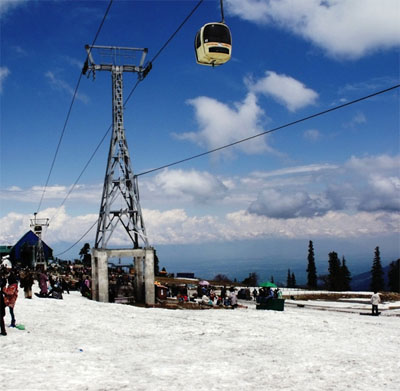|
Srinagar Tour
-------------------------------------------------------------------------------------------------------------
Srinagar is located in the heart of the Kashmir valley at an altitude of 1,730 m
above sea level, spread on both sides of the river Jhelum. The Dal and Nagin
lakes enhance its picturesque setting, while the changing play of the seasons
and the salubrious climate ensures that the city is equally attractive to
visitors around the year.
Kalhana, the author of 'Rajtarangini’, states that Srinagri was founded by
Emperor Ashoka (3rd Century BC). The present city of Srinagar was founded by
Pravarasena-II, and Hiuen Tsang, who visited Kashmir in 631 AD, found it at the
same site as it is today. Laltaditya Muktapida was the most illustrious ruler of
Kashmir in the Hindu period, which ended in 1339 AD. King Zain-ul-Abidin
(1420-70 AD), popularly known as ‘Budshah’, was a great patron of Sanskrit.
Akbar captured Kashmir valley for the Mughals, who endowed Srinagar with
beautiful mosques and gardens. The Sikhs overthrew the last Muslim ruler in the
reign of Maharaja Ranjit Singh in 1819. In 1846 the Dogras secured the
sovereignty of Kashmir from the British under the Treaty of Amrjtsar, and in
1947 the state of Jammu and Kashmir with Srinagar as its capital, became part of
the Indian Union.
Today Srinagar is a resort for the tourist who can experience, at first hand,
the peculiar beauty of the valley that has attracted the Chinese, the Mughals
and the British to it.
Its waterways with their own quaint lifestyle, the unique Houseboat, the
blossoming gardens, water sports activities, shopping for lovingly hand-crafted
souvenirs and the nearby resorts make it a cherished spot among those looking
for a memorable holiday
A Legend
Legend has it that when Pravarasena decided to build himself a new capital, to
choose the location he started walking at midnight and was confronted by a demon
on the other side of the Mahasarit River. The demon spread his bent leg across
the stream and dared the king to cross over it to the other side. The king cut
off the leg with one stroke of his sword and calmly crossed.
The demon was delighted with the king's boldness and told him to build the city
where he would find the beginnings of a plan laid out for him. The next morning
the king found the boundary lines drawn at the foot of Hari Parbat and built his
city there. To this day the waters of the Dal Lake are separated from the
Tsont-i-Kul by a Sathu or Bund that is shaped like a bent leg.
Houseboats
If one is longing for the delights of a houseboat holiday, then check out lakes
of Srinagar to try one. Srinagar is a unique city because of its lakes - the Dal
, Nagin and Anchar. The River Jhelum also flows through a part of the city.
Most houseboats on the Nagin and the Jhelum are situated on the banks of the
lake, and can be accessed directly from land without the help of a Shikara.
While all those on the Dal require a Shikara to get to and from them. Most
houseboats on the Dal are situated in long straggling rows; some face the
boulevard, Srinagar's exciting address, while others are situated singly or in
groups of two and three.
City Of Lakes
Srinagar's lakes are the reason why the city receives so many tourists. Not just
expanse of water, the lakes are filled with houseboats, villages, narrow water
canals, lotus and vegetable gardens and houses and shops.
Life on the lakes, as witnessed from the confines of a Shikara, is unique. It is
possible to book a Shikara for the whole day and sightsee Nishat Garden, Nasim
Bagh, Hazratbal Mosque, Pathar Masjid and Shah Hamdan's Shrine, having a picnic
lunch in the boat.
While Nagin is quieter, the Dal is full of local colour, with tourists being
rowed in Shikara to shops selling every conceivable handicraft - all within the
lake.
Let's Have A Ride Of The Lake!
A Shikara ride is one of the most soothing, relaxing aspects of a holiday in
Kashmir. It can be an hour-long ride to see the sights of the Dal; a shopping by
Shikara expedition to visit handicraft shops within the periphery of the lake;
or a whole day trip to visit important city landmarks.
Because the Dal is so central to the landscape of Srinagar, many places of
tourist interest have, over the ages, been built in its vicinity.
The Mughal Gardens
The art of designing formal gardens which the Mughal (also spelt as Moghul)
emperors expended such time and energy upon, reached its zenith in Kashmir. The
Mughal gardens in Agra or Lahore may be very fine but only in Kashmir is the
formal beauty of the gardens matched by the natural beauty of the surrounding
countryside. The gardens follow a standard pattern with a central channel
carrying water through the descending terraces in a delightful series of
cascades, falls and pools.
-------------------------------------------------------------------------------------------------------------
|


